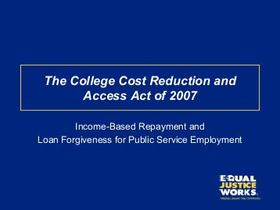- The mission of Lincoln College is to assist each student in the development and achievement of personal and educational goals and to assure that its degree recipients are liberally educated and personally and academically prepared to succeed.
School Highlights
Lincoln College serves 994 students (69% of students are full-time).
The college's student-teacher ratio of 4:1 is lower than the state community college average of 21:1.
Minority enrollment is 58% of the student body (majority Black), which is more than the state average of 53%.
Quick Facts (2025-26)
- Enrollment: 994 students
- In-state tuition: $17,500
- Out-state tuition: $17,500
- Acceptance Rate: 70%
- Student-teacher ratio: 4:1
- Minority enrollment: 58%
- Source: Integrated Postsecondary Education Data System (IPEDS)
Top Rankings
Lincoln College ranks among the top 20% of public schools in Illinois for:
Category
Attribute
Diversity
School Resources
School Overview
The teacher population of 221 teachers has stayed relatively flat over five years.
Lincoln College
(IL) Community College Avg.
Carnegie Classification
Associates Colleges
Associate's Colleges: Mixed Transfer/Career & Technical-High Nontraditional
Institution Level
Less than 2 yrs
At least 2 but less than 4 years
Institution Control
Public
Public
Total Faculty
221 staff
239 staff
School Calendar
Student Body
The student population of Lincoln College has declined by 10% over five years.
The student-teacher ratio of 4:1 has stayed the same over five years.
The Lincoln College diversity score of 0.71 is more than the state average of 0.69. The school's diversity has grown by 9% over five years.
Total Enrollment
994 students
3,838 students
Student-Teacher Ratio
4:1
21:1
# Full-Time Students
688 students
1,091 students
# Part-Time Students
306 students
2,747 students
# Enrollment Undergraduate
986 students
328 students
# Full-Time Undergraduate Students
688 students
1,091 students
# Full-Time Graduate Students
n/a
43 students
# Part-Time Undergraduate Students
n/a
3,310 students
# Part-Time Graduate Students
n/a
18 students
Total Dormitory Capacity
n/a
132 students
% Asian
n/a
6%
% Hispanic
5%
26%
% Black
29%
13%
% White
42%
47%
% Two or more races
4%
3%
% Non Resident races
3%
1%
% Unknown races
16%
4%
Diversity Score
0.71
0.69
College Completion Rate (Students who graduate in less than 4 years)
n/a
40%
College Completion Rate (Students who graduate in 4 years or more than 4 years)
2.5%
55%
Average Graduate Earnings (10 Years)
$32,500
$31,800
Tuition and Acceptance Rate
The public in-state tuition of $17,500 is more than the state average of $7,875. The in-state tuition has stayed relatively flat over four years.
The public out-state tuition of $17,500 is more than the state average of $10,847. The out-state tuition has stayed relatively flat over four years.
In-State Tuition Fees
$17,500
$7,875
Out-State Tuition Fees
$17,500
$10,847
% Students Receiving Some Financial Aid
100%
81%
Median Debt for Graduates
$19,000
$8,029
Median Debt for Dropouts
$8,250
$4,618
Acceptance Rate
70%
89%
SAT Total Avg.
1,105
1,105
SAT Reading
390
390
SAT Math
360
360
SAT Writing
355
355
ACT Total Avg.
51
51
ACT Composite
17
17
ACT English
17
17
ACT Math
17
17
Source: 2023 (or latest year available) Integrated Postsecondary Education Data System (IPEDS) , School Administrators
School Notes
- School Mascot: Lynx
- The college is a selective co-ed two-year, private, liberal arts college, accredited by the North Central Association designed to prepare a student for university study through a structured, supportive approach to learning. The college includes 60-acre wooded campus with complete academic, artistic, and athletic facilities. Lincoln College was established in 1865 to fill the need for an institution of higher learning in central Illinois. Commissioners investigated several sites, and in December, 1864, selected Lincoln, Illinois. On February 6, 1865, a charter for the new university was secured from the Illinois General Assembly. Ground was broken for University Hall, the first college building, just six days later on Abraham Lincoln's birthday. Lincoln College provides a full measure of personal support. This is an intentionally small institution because we strive to give each student substantial individual attention. Our class sizes are small and each year we are delighted to observe students, faculty members, and support staff coming together as an academic family. There are a number of extra-curricular and co-curricular activities available to students on both campuses and, because of our small size, we are able to offer many educational enrichment opportunities. Lincoln College at Lincoln is a two-year residential campus offering a liberal arts foundation as well as athletic and fine arts programs. Lincoln College at Normal also offers associate degree programs as well as four-year programs and a cosmetology school. Both central Illinois campuses provide low student to faculty ratios and complete supportive services.
Frequently Asked Questions
How much does Lincoln College cost?
Lincoln College's tuition is approximately $17,500 for In-State students and $17,500 for Out-State students.
What is the acceptance rate of Lincoln College?
The acceptance rate of Lincoln College is 70%, which is lower than the state average of 89%.
What is Lincoln College's ranking?
Lincoln College ranks among the top 20% of community college in Illinois for: Diversity in US community colleges and Percent of students receiving financial aid.
Recent Articles

International Students & Community Colleges January Intake Guide
Learn how international students can apply to U.S. community colleges for the January intake, including timelines, visas, costs, and tips.

Fact or Fiction: Do Community Colleges Offer Quality Education?
Do community colleges offer a quality education? Updated 2025 data, expert insights, tuition trends, and outcomes reveal the facts.

Community Colleges Fight Stereotypes, Evolve in 2025
Updated 2025 insights on community colleges battling stereotypes, rising enrollment, affordability, and evolving pathways for student success.










